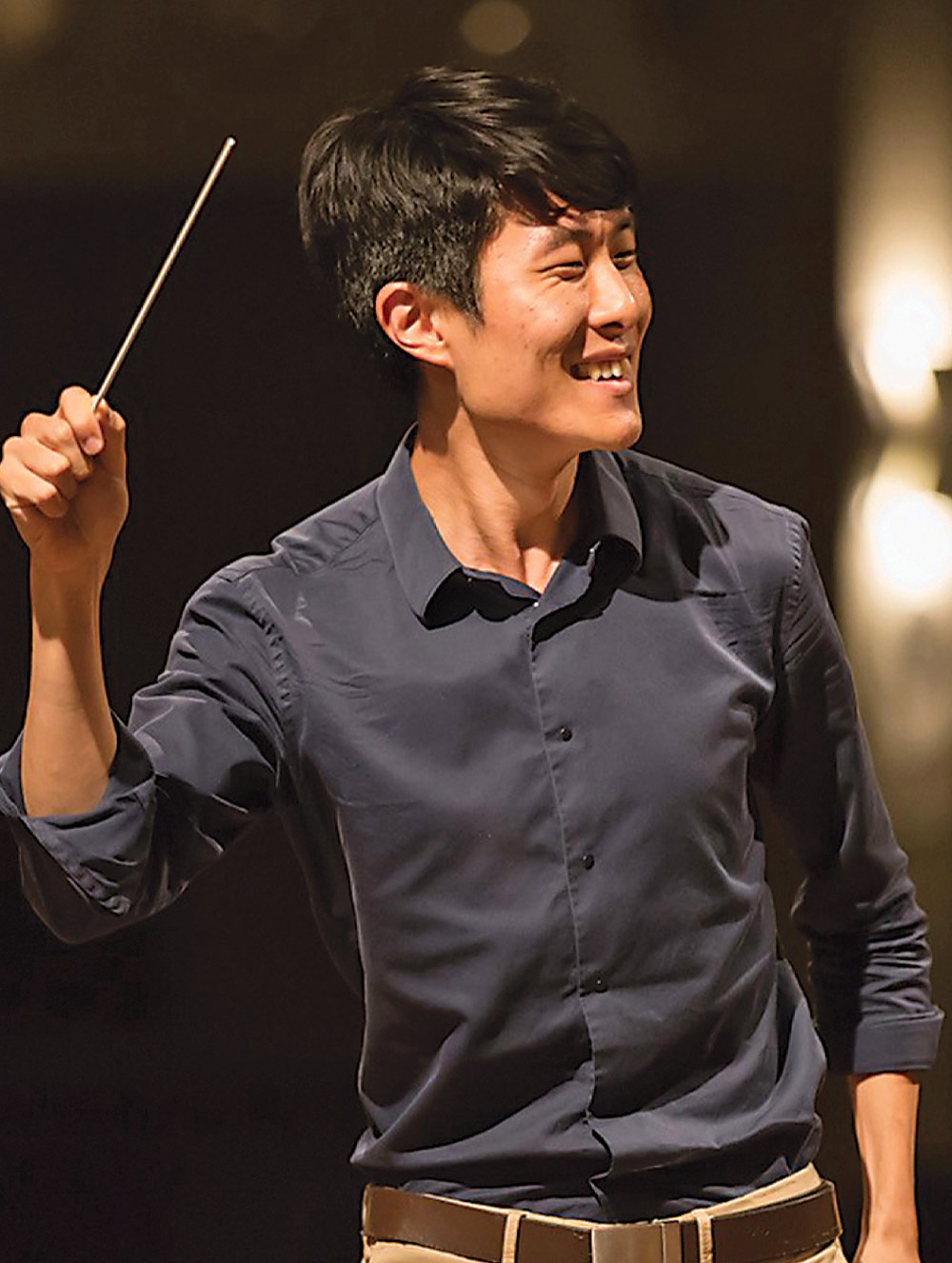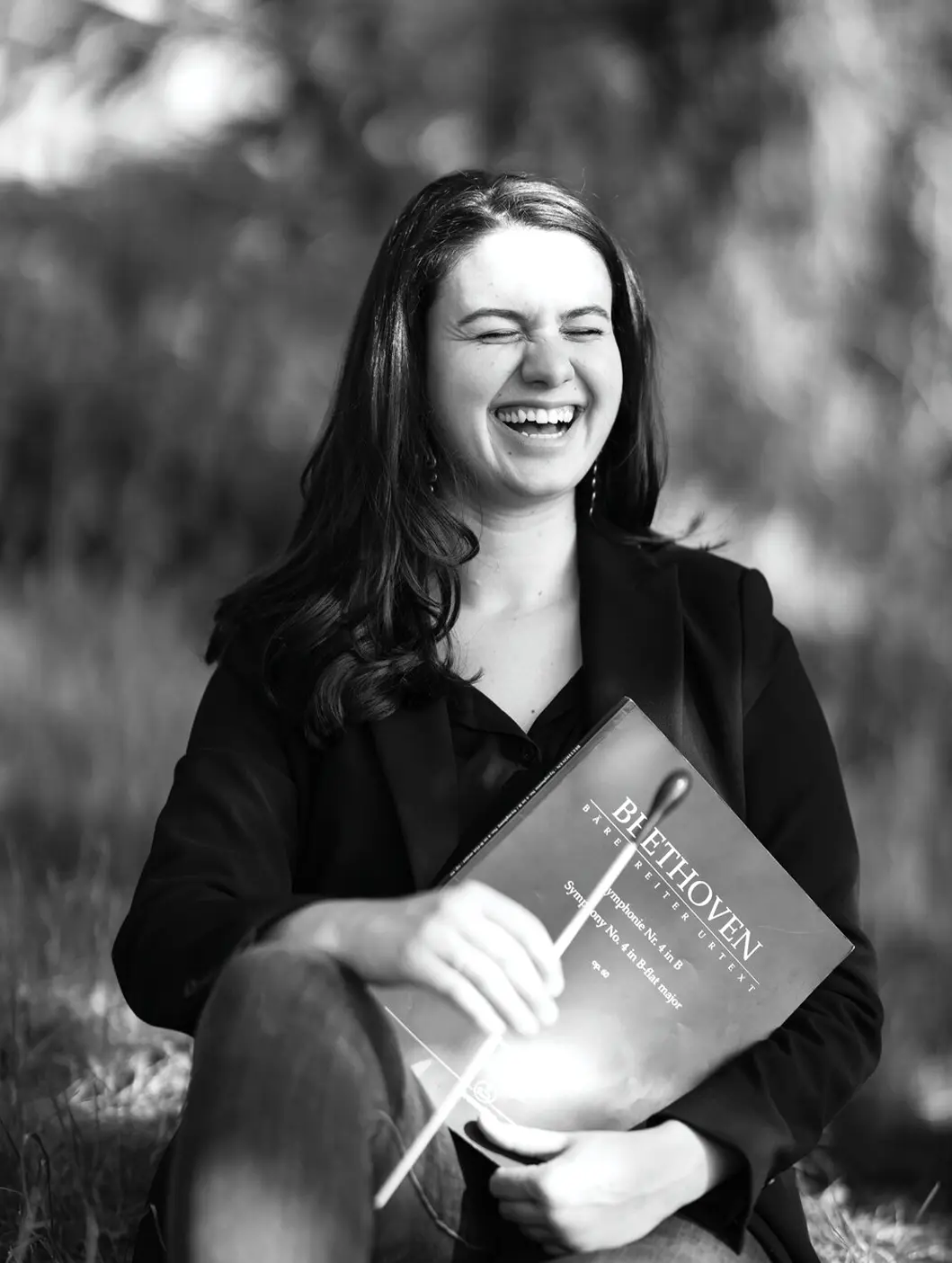

Conducting a Friendship
by Mahika Shergill ’26
Kim, who envisioned a career in investment banking, discovered his passion for conducting during a transformative performance of Mozart’s Requiem in high school. Swarthmore seemed like the perfect intersection for his diverse interests.
“Swarthmore really changed my life in that it allowed me to do conducting with no prior experience,” says Kim, who credits Andrew Hauze ’04, senior lecturer in music, with nurturing his conducting skills from scratch.
Kim is the music director of the New York Youth Symphony, considered to be one of the best of its kind in the nation, and a faculty member at The Conducting Institute, where he now helps train other aspiring conductors.
Samuels-Shragg, on the other hand, embraced conducting early, inspired by a love for chamber music and an eighth-grade paper she wrote on women conductors.
“I thought, ‘This combines my three favorite things: music, dance and being in charge, and I have to do more of this!’”
Samuels-Shragg chose Swarthmore after a conversation with Hauze in which he assured her there would be plenty of lessons, skills training, and podium time with his ensembles.
Samuels-Shragg earned her master of music in orchestral conducting from The Juilliard School, which provided her once-in-a-lifetime opportunities like conducting composer John Williams’ music in front of him. Currently, she is the assistant conductor for the Spokane Symphony and is finishing her second season as assistant conductor with the Plano Symphony. In the 2024-25 concert season, Samuels-Shragg will be the new assistant conductor for the Dallas Symphony Orchestra.
“Swarthmore really changed my life in that it allowed me to do conducting with no prior experience.”
—Andrew Kim ’18, music director of the New York Youth Symphony
“A lot of our work starts off at the desk,” Kim says. “It’s a self-process of learning and studying the music, and then the inspirational work begins when we go to rehearsal.”
For Samuels-Shragg, conducting is most fulfilling when she can create an atmosphere where the 80 people in front of her can do their jobs the best they can.
“Orchestral music is such a wonderfully unique art form in that it requires so many individuals to commit to showing up for it to exist,” she says.
Kim and Samuels-Shragg have continued showing up for one another over the years — from the first time they met in 2016 to now, they remain dear friends.
“One of the things I loved most about Swarthmore was that it wasn’t a music conservatory,” says Samuels-Shragg. “But it could be really lonely to be the last one in the Lang corridor at night, so having a buddy down the hall was so nice.”
Kim remembers being highly stressed in his last two years at Swarthmore, determined to get into a conducting masters program, and Samuels-Shragg was key in helping him feel less overwhelmed. She describes her year as a sophomore and Kim’s as a senior as a “golden time” in her life.
Asked for advice for aspiring conductors, Samuels-Shragg and Kim emphasize the importance of maintaining a deep love for and curiosity about music.
Kim relies on his love for music as a source of motivation, especially during tough times. Samuels-Shragg underscores the value of curiosity, emphasizing that music exists in a broader context.
“Something that was great about Swarthmore was that I couldn’t only do music all the time — it allowed me to develop other interests,” she says. “It’s crucial to understand that music never exists in a vacuum.”